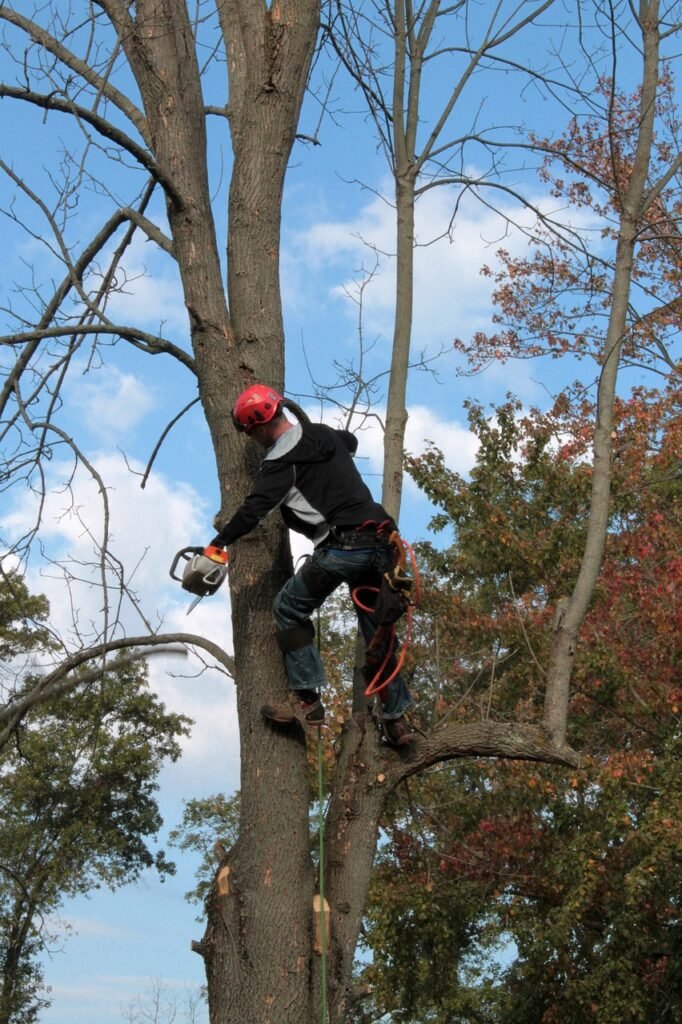Common Mistakes to Avoid in Tree Care: Tips from Arborists
Taking care of trees might seem like a straightforward task, but it’s more intricate than it appears. Trees are living organisms that require proper attention and care to thrive and remain healthy. Unfortunately, many well-intentioned homeowners inadvertently make mistakes that can harm their trees rather than help them. To prevent such mishaps, it’s essential to understand these common mistakes and learn from the insights of arborists, who are experts in tree care. In this article, we’ll explore some prevalent errors to avoid and gather valuable tips from arborists to ensure your trees flourish.

Improper Pruning Techniques
One of the most frequent mistakes homeowners make is improper pruning. Incorrect pruning can lead to structural weakness, disease susceptibility, and aesthetic issues. Arborists emphasize the importance of using the right tools and techniques for pruning. They recommend avoiding topping, which involves indiscriminately cutting off the tops of trees, as it can cause long-term damage. Instead, focus on selective pruning to remove dead, diseased, or crossing branches while maintaining the tree’s natural shape and structure.
Over or Under-watering
Achieving the right balance of water is crucial for tree health. Both overwatering and underwatering can stress trees and make them susceptible to diseases and pests. Arborists advise homeowners to water trees deeply and infrequently, ensuring that the soil around the roots remains moist but not waterlogged. Factors such as soil type, drainage, and weather conditions should be considered when determining the appropriate watering schedule for trees.
Ignoring Soil Health
Healthy soil is essential for the vitality of trees. However, many homeowners overlook soil quality when caring for their trees. Arborists stress the importance of conducting soil tests to assess nutrient levels, pH balance, and compaction. Based on the results, they recommend appropriate soil amendments and mulching techniques to improve soil structure and fertility, promoting optimal tree growth.
Ignoring Signs of Pest and Disease
Pests and diseases can wreak havoc on trees if left unchecked. Ignoring early warning signs such as leaf discoloration, unusual growths, or pest infestations can result in severe damage or even tree death. Arborists advise homeowners to regularly inspect their trees for signs of pests and diseases and take prompt action if any issues are detected. Integrated pest management strategies, including cultural, biological, and chemical controls, can help mitigate pest and disease problems effectively.
Planting Trees Incorrectly
Proper tree planting is critical for establishing healthy root systems and ensuring long-term growth. However, many homeowners make mistakes such as planting trees too deeply, failing to loosen root balls, or neglecting proper spacing between trees. Arborists recommend following planting guidelines specific to each tree species, including proper depth, spacing, and soil preparation. Additionally, they emphasize the importance of mulching and watering newly planted trees to support root establishment.
Compacting Soil Around Trees
Soil compaction can restrict root growth and limit nutrient uptake, adversely affecting tree health. Unfortunately, activities such as heavy foot traffic, construction, or parking vehicles near trees can lead to soil compaction. Arborists advise homeowners to minimize soil compaction by avoiding unnecessary traffic around trees and implementing measures such as mulching and aeration to improve soil structure.
Overlooking Tree Health Assessments
Regular tree health assessments are essential for identifying potential issues and addressing them before they escalate. However, many homeowners overlook this aspect of tree care until problems become severe. Arborists recommend scheduling annual inspections by certified arborists to evaluate tree health, assess structural integrity, and detect early signs of pests or diseases. Timely interventions based on these assessments can prevent costly damage and preserve tree health.
Using Incorrect Fertilization Practices
While fertilization can benefit tree growth, improper use of fertilizers can harm trees and disrupt soil balance. Arborists caution against over-fertilizing or applying fertilizers at the wrong time, which can lead to nutrient imbalances and environmental pollution. Instead, they recommend conducting soil tests to determine nutrient deficiencies and applying fertilizers judiciously based on specific tree requirements and soil conditions.
In conclusion, proper tree care requires knowledge, patience, and attention to detail. By avoiding common mistakes and following the advice of arborists, homeowners can promote the health and longevity of their trees. Remember to prioritize pruning techniques, watering practices, soil health, pest and disease management, proper planting, soil compaction prevention, regular assessments, and fertilization strategies. By doing so, you’ll not only enhance the beauty of your landscape but also contribute to the well-being of the environment.
4 thoughts on “Common Mistakes to Avoid in Tree Care: Tips from Arborists”
I have been surfing online more than 3 hours today, yet I never found any interesting article like yours. It抯 pretty worth enough for me. In my view, if all website owners and bloggers made good content as you did, the internet will be a lot more useful than ever before.
One thing I would really like to say is car insurance cancellations is a dreadful experience and if you’re doing the proper things as a driver you’ll not get one. Lots of people do have the notice that they have been officially dropped by their insurance company they then have to fight to get further insurance from a cancellation. Affordable auto insurance rates tend to be hard to get from cancellation. Knowing the main reasons pertaining to auto insurance canceling can help individuals prevent burning off one of the most essential privileges offered. Thanks for the strategies shared by means of your blog.
Hi there, I discovered your web site by the use of Google whilst searching for a comparable subject, your site got here up, it seems to be great. I’ve bookmarked it in my google bookmarks.
You’re so capable!